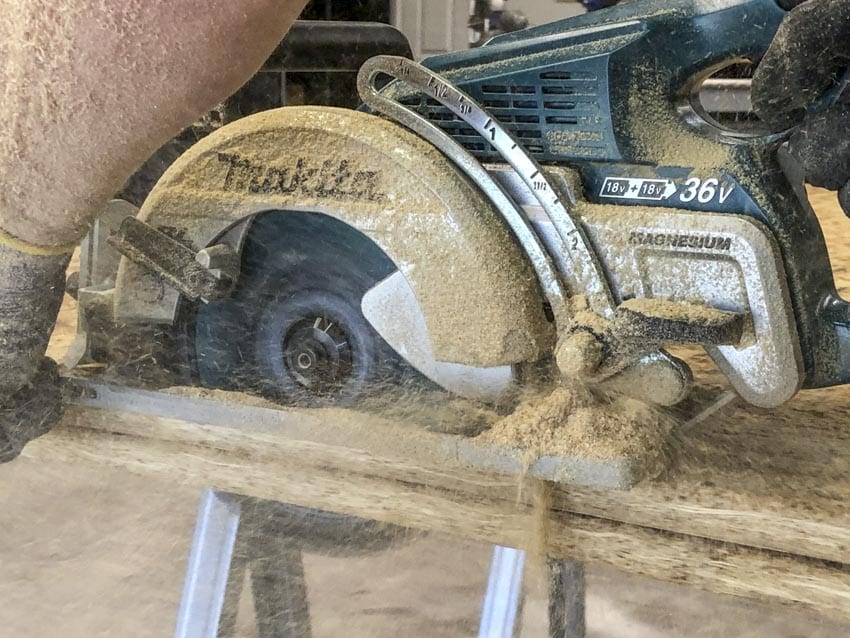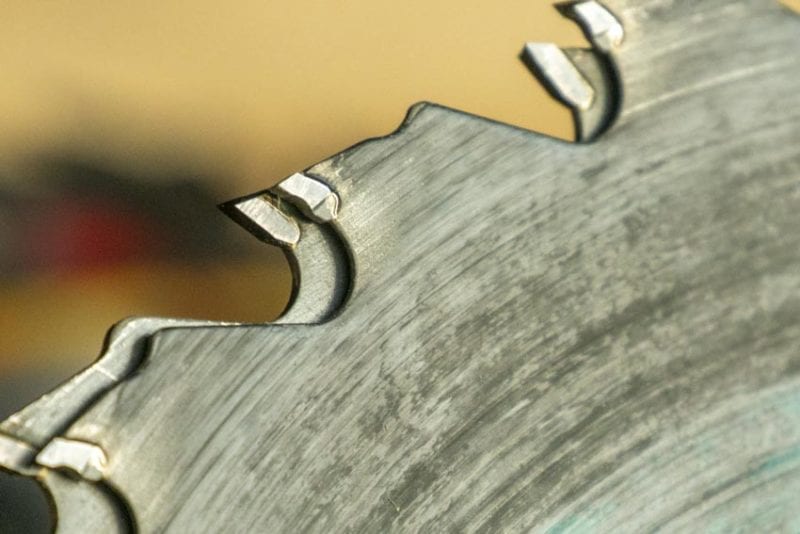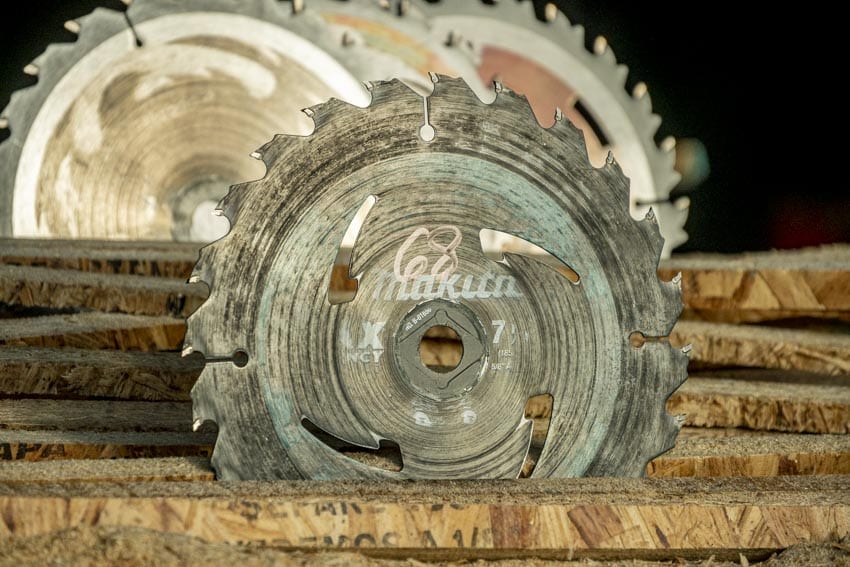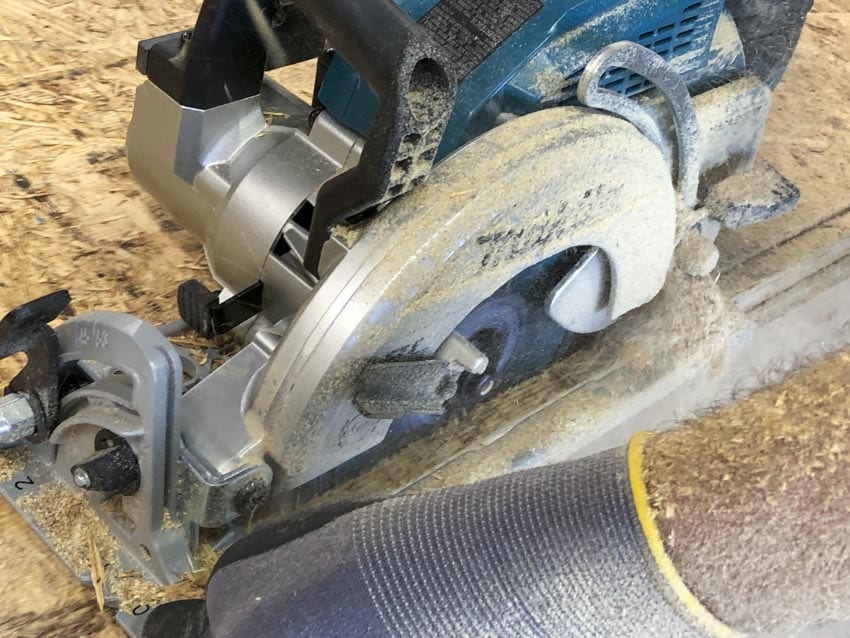Professional Stock Blades Can’t Keep Up With Makita Max Efficiency Circular Saw Blades
In our original review of Makita Max Efficiency circular saw blades, we put them up against several premium blades with impressive results. One thing to keep in mind is that Makita uses these as their stock blade. That left us wondering how these blades compare to what other professional brands give you out of the box on their respective saws.
Testing Makita Max Efficiency Circular Saw Blades
To find out, we took a sampling of stock blades from Makita, Milwaukee, Metabo HPT, and Ridgid. Installing them on our Makita XSH01 18V X2 Rear-Handle Saw, we made as many 4-foot rip cuts as we could through double-stacked 3/4-inch OSB sub-floor on one fully charged set of 5.0Ah batteries.

Design and Feel
As we made our cuts, several things stood out to us. First, Makita’s blade is much smoother through the cut than any of the other blades. It’s also much faster.
Part of that boils down to the ultra-thin 0.057-inch kerf design. Another part is the non-stick coating Makita uses on their blades—which lasted significantly longer than the other blades we tested.
Then there are the teeth. Instead of standard ATB designs, Makita uses an ATAFR configuration—alternate top alternate face with raker. A closer inspection side-by-side with other blades revealed a very different 23º tooth angle that shaves and ejects material more quickly than the other blades we tested.

There is a potential downside to the design, though. If you’re really pushing the saw, you might see more blade wobble than with thicker blades. To avoid that, do what we did in our test—let the saw and the blade do the work. These are already fast-cutting blades, so you’re not losing anything by taking a little pressure off so the RPMs stay high and the cut stays true.
Does it Actually Make a Difference?
But what about the actual results? Here’s how it all finished:
| Number of Cuts | Linear Feet of Cutting | Total Linear Feet of OSB | |
| Metabo HPT Stock | 47 cuts | 188 feet | 376 feet |
| Milwaukee Stock | 53 cuts | 212 feet | 424 feet |
| Ridgid Stock | 55 cuts | 220 feet | 440 feet |
| Makita Max Efficiency | 68 cuts | 272 feet | 544 feet |
As you can see from the table, our Makita Max Efficiency circular saw blade gave us significantly more cutting on a single battery charge. It ended up giving us 45% more cutting per charge than Metabo HPT, 28% more than Milwaukee, and 24% more than Ridgid.

That translates into more work between charges. On some jobs, that means getting through an entire day on one charge,
The Bottom Line
Makita Max Efficiency circular saw blades are one of the few that we don’t swap out immediately when we buy a new saw. They’re a big step ahead of most stock blades and they even outperform most of the popular framing blade upgrades. At just $10 each, there’s not much risk. Give them a shot and see if they cut better with more cuts per charge than your current framing blade.
We only tested 7 1/4-inch framing blades in this review. However, there are options in the Max Efficiency line from 5 3/8-inch all the way to 12 inches. Whether you’re working with a metal cutting saw, circular saw, track saw, table saw, or miter saw, Makita has you covered.



